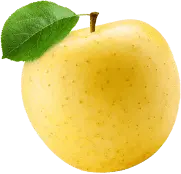
Tree Top sponsored a webinar earlier this month – Fruit in Pet Food Formulations: Nutritional Benefits & Trends. Since there was so much great information included in the webinar, I’m going to cover it in two blog entries. This first one will summarize the info Mintel’s Lynn Dornblaser shared on trends influencing fruit use in pet foods and treats. In a subsequent blog entry, I’ll review the info on nutritional benefits of using fruit in pet food formulations that was presented by Blue Buffalo’s Matt Panasevich, Ph.D. So without further ado, here’s the latest on pet parent behavior and product trends.
Fruit innovation white space
Sales trends in pet food and snacks for dogs and cats over the past few years were covered, but I’m going to skip over most of that info and jump to talking about the possibilities for fruity innovations. As for the sales numbers, suffice it to say they show opportunities exist in pet treats, and to a lesser but to some extent, in toppers for dry foods. As has long been the case, pet parents treat their four-footed friends as treasured members of their families and want to follow healthy dietary patterns. And of course, this includes the occasional treat for their beloved companions.
In an April 2020 Lightspeed/Mintel study, 78% of respondents purchased dog treats, 67% cat treats, 17% dog food toppers, and 16% cat food toppers. These figures were said to indicate the key to growth in treats is to increase frequency, and while purchase patterns in toppers is lower, the segment is growing. Both pet treats and toppers offer potential for adding nutritious fruit ingredients.
When pet food treat purchasers were asked about whether it’s important to consider nutrition in treats 84% agreed that it is. A further 78% thought treats help strengthen the bond with their pet, yet only 58% agreed it was important to give pets daily treats. Dornblaser pointed out a gap in behavior and attitude among pet owners that left an opening for enhancing nutritional content in treats. Nutritionally-enhanced treats could then be positioned as a daily vehicle to strengthen the emotional human-animal bond.
Pandemic repercussions
The COVID-19 pandemic has brought pets and people closer together, as 63% of respondents in the Lightspeed/Mintel study reported spending more time with their pets. (It’s also no secret that pet adoptions are up since the onset of the pandemic. Just goes to show even public health crises can have a silver lining.) And nearly 40% say they have a stronger bond with their pet as a result. The closeness precipitated by the pandemic accentuates pet parents’ desire to give their pets the best and this includes giving them treats.
The same research showed a strong willingness among consumers to pay more for higher quality pet food. The trend toward premiumization that has been growing over the past few years may be impacted soon though by the looming recession triggered by job losses due to the pandemic. Value is now more top of mind with consumers. Use of high-quality ingredients, flavor variety, and health-specific ingredients are ways to convey value to pet food shoppers.
Natural and organic ingredients are especially important to young pet owners (aged 18 to 34), as 41% rated “all-natural” as an important purchase consideration, while only 29% of those 55 and up did.
Top Fruit Ingredients Used in Pet food
1. Berries and other small fruits
2. Apples and pears
3. Tropical, sub-tropical and exotic fruit
Fruit is a high-quality ingredient that appeals to pet parents, as it carries the same health halo in pet food that it does in people food. Fruit can be added as a natural, healthy, clean label ingredient for its nutritional benefits or it may be used as a functional ingredient to add natural color and texture and/or to provide fiber and bulk in weight management applications.
Fun Fact: Cats are unable to detect sweetness, but dogs can.
So, pet food formulators really can make foods that appeal to a canine’s sweet tooth. The Mintel Global New Product Database tracked several brands that offer fruit toppers for customizing dog food, and fruit-containing treats for dogs and cats – even though felines may not appreciate their sweet flavor.
Finally, from a market perspective, treats and toppers offer the greatest opportunities to use fruit ingredients. Fruit on a label can help position a brand as all-natural, sustainable and nutritious. Adding fruit can also appeal to the health-conscious pet parent with its antioxidants and fiber content.
Want to talk to a Tree Top R&D expert about formulating pet treats and toppers with fruit? We’re ready to help you develop your next fruity product offering. Let’s chat. Please explore our pet food fruit ingredients and order your sample today.
P.S. Stop back next month to see the results of the webinar poll on what attendees favorite fruit for animals is and to read details of the nutritional benefits of fruit.


